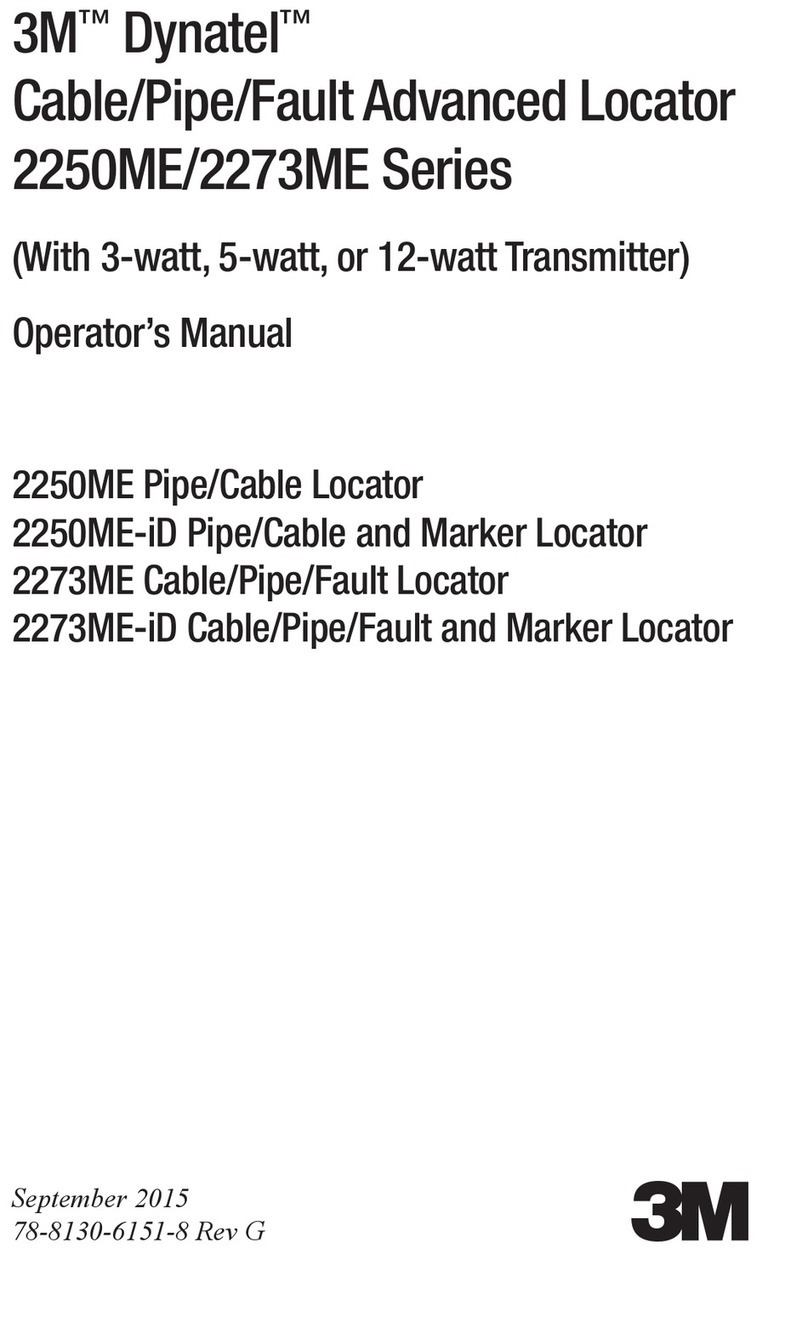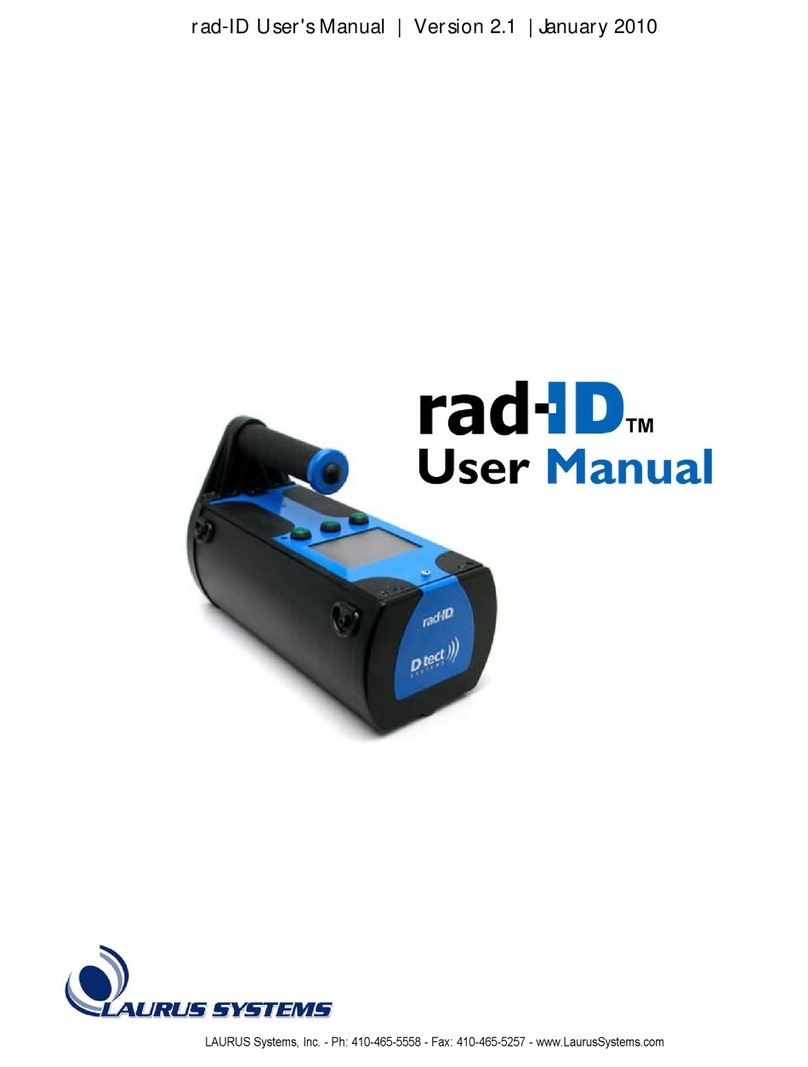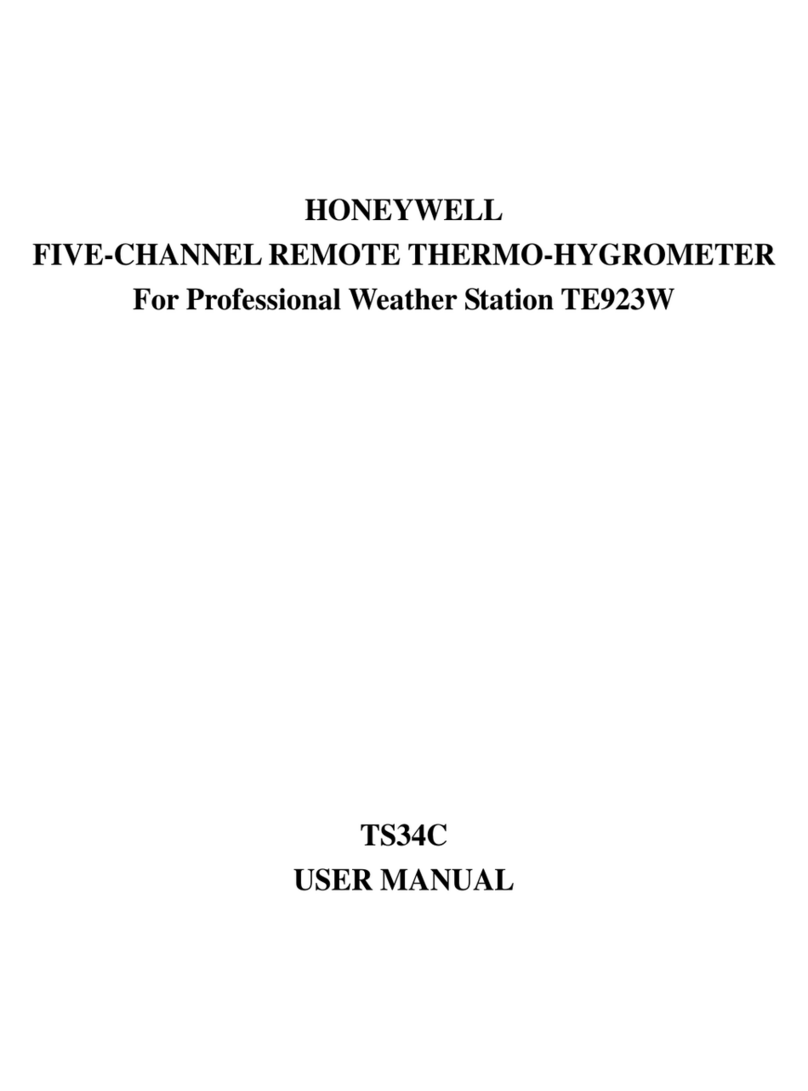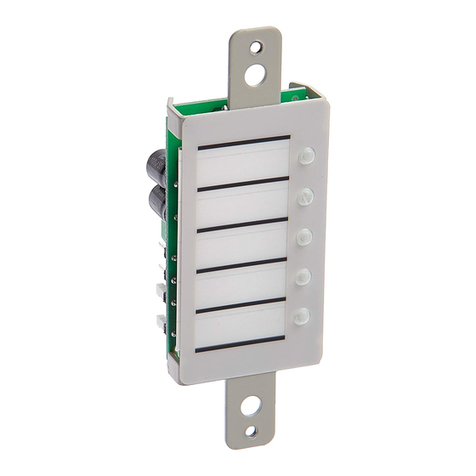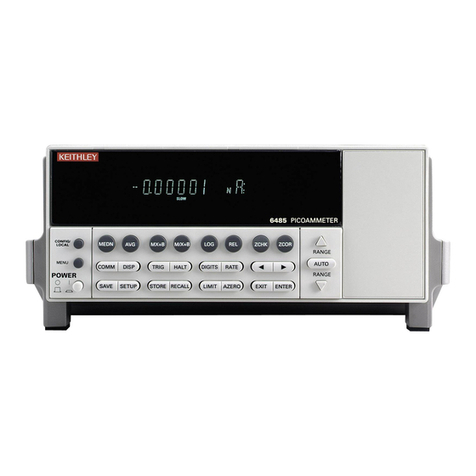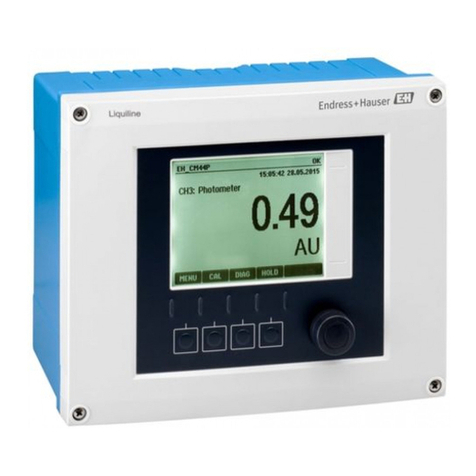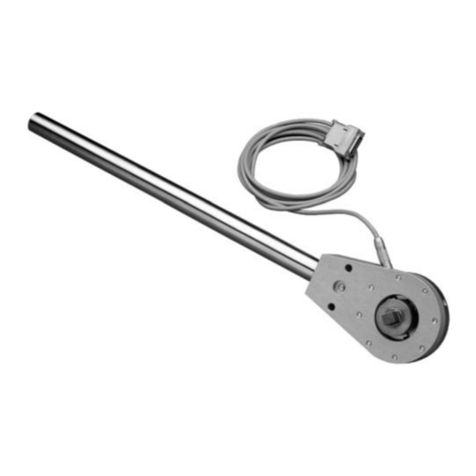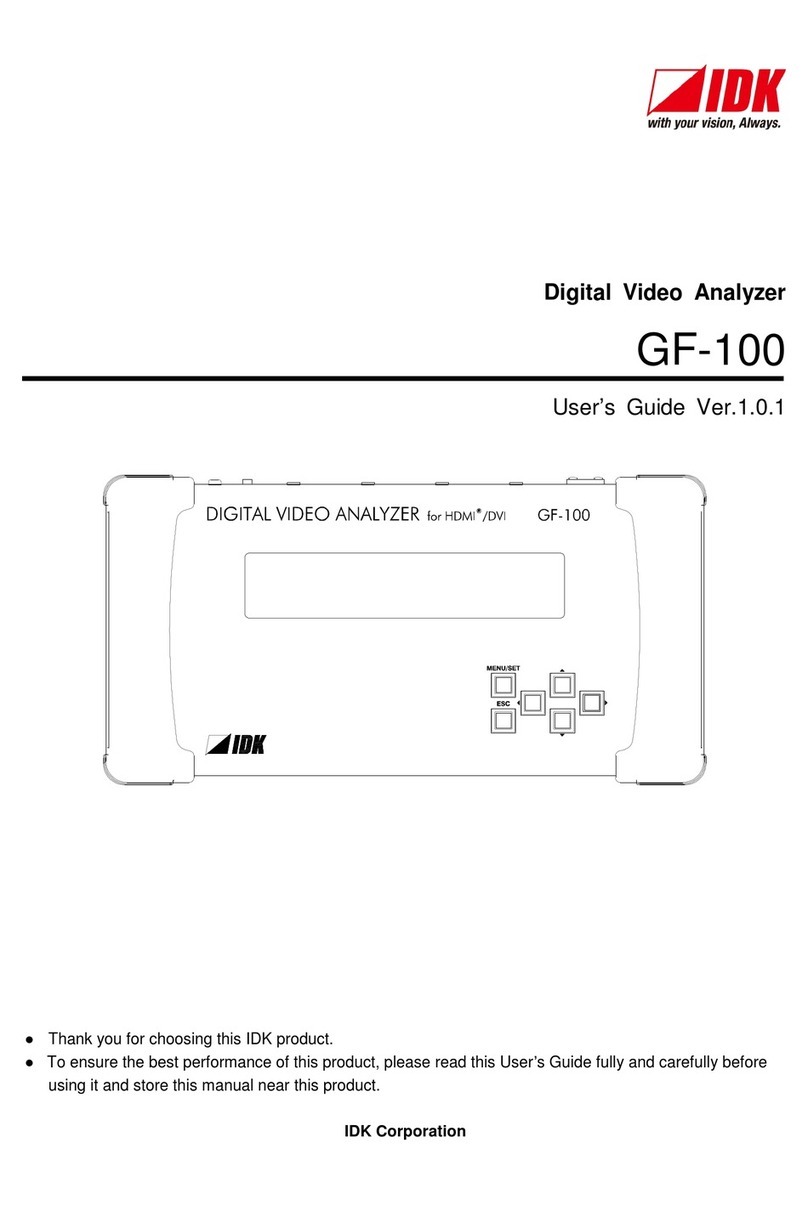GDZX ZXPD-100K User manual

ZXPD-100K Partial
Discharge Detector
For Switchgear

ZXPD-100K
Content
Safety Precautions...........................................................................2
Warning................................................................................................3
Operation Notices............................................................................ 5
I. Non-intrusive Partial Discharge Detection........................ 6
1.1 Introduction........................................................................6
1.2 Airborne ultrasonic discharge activity..................... 7
1.3 Airborne high-frequency electromagnetic
discharge activity.....................................................................8
II. Technical Parameters............................................................... 9
III. Structural Layout...................................................................12
3.1 Panel arrangement....................................................... 12
3.2 Sensor configuration.................................................... 14
IV. Operation................................................................................... 16
4.1 Main interface................................................................. 16
4.2 Ultrasonic measurement program..........................19
4.3 TEV measurement program...................................... 21
4.4 UHF measurement program..................................... 25
4.5 Historical data inquiry................................................. 27
V. Specification for TEV Reading............................................. 30
VI. Service Conditions................................................................. 41
VII. Conformance Statement................................................... 41
VIII. After-sales Service............................................................. 42

ZXPD-100K
Safety Precautions
The instrument is used for detecting the partial
discharge sources in MV/HV equipment. Even if no
electric discharge is detected, it is not indicated that
there is no discharge activity in the high-voltage
equipment. The discharge sources usually have a latent
period, and the insulation property may become
ineffective due to other causes than partial discharge. If
significant discharge is detected in the equipment
connected to a medium/high-voltage electric power
system, it is necessary to inform the equipment
maintenance department immediately.

ZXPD-100K
Warning
The product can be used only at the ground potential.
Before starting the probe during test, it is necessary
to ensure that the metal shell of the electric
instrument is grounded.
Please ensure a safety distance between the
high-voltage part and the instrument, the probe, the
operator involved at any time.
Please strictly abide by the safety rule of the electric
power system.
Please do not use the product during lightning.
Please do not use the instrument for measurement
immediately after starting it.
In case of environment change, please press the Left
key to eliminate the environment background value.
Please do not carry out such operations as mechanical
impact, vibration and high-temperature heating for
the equipment and the probe.
Please do not operate the product in an explosive
environment.
In case of any abnormality or use query, please do not
start the instrument but directly contact the
manufacturer or agent.

ZXPD-100K
Implementation of standards
This product performs the following standards:
DL-T 1416-2015 General specification for ultrasonic
partial discharge tester
Q/GDW 11059.1-2013 Guidelines for field application of
partial discharge live test for gas insulated metal enclosed
switchgear
Q/GDW 11060-2013 Guidelines for field application of
transient earth voltage partial discharge live test for AC
metal enclosed switchgear
Q/GDW 11063-2013 Technical specification for
transient earth voltage partial discharge detector

ZXPD-100K
Operation Notices
When using TEV products, it is necessary to abide by the
following rules:
1. The strong electromagnetic interference in the
frequency range from the DC generated by mobile phones,
RF transmitters, video displays and unshielded electronic
equipment to 1 GHZ can influence the reading, so the
product should be placed in a free space at least 1m away
from any conductor surface in order to measure the value
of the local electromagnetic field.
2. Please be careful when using the instrument in a
narrow space, because the reading accuracy may be
influenced when the instrument is near to any other
grounding plane. Therefore, it is necessary to use the
instrument at the place at least 30cm (vertical distance)
away from any metal object.

ZXPD-100K
I. Non-intrusive Partial Discharge Detection
1.1 Introduction
Partial discharge does not cause the electric discharge of
a completely short-circuited electrode. Such discharge
usually has a very small amplitude value, but it will
certainly cause the continuous deterioration of the
property of the insulation layer and finally cause electric
equipment fault.
The non-intrusive
partial discharge
detection, as a
convenient and
simple method, is
used for identifying
the potential insulation faults which may cause power
cutoff or personal injury.
The partial discharge emits energy in following manners:
Electromagnetic energy: radio wave, light and heat;
Sound energy: sound wave and ultrasonic wave;
Gas: ozone and nitric oxide.
The most practical non-intrusive detection technologies

ZXPD-100K
are all based on the detection of the high-frequency
signals and the ultrasonic signals in the electromagnetic
spectrum. The product is an instrument which has
simple operation and is specially developed for detecting
the activities of electromagnetic waves and ultrasonic
waves.
1.2 Airborne ultrasonic discharge activity
The sound radiation in a partial discharge activity
appears in the whole sound spectrum. It is possible to
hear, but this depends on the hearing ability of the
person involved.
The use of the instrument for detecting the ultrasonic
wave in the sound spectrum has following advantages:
compared with human ear, the instrument is more
sensitive and irrelevant to the operators, and runs at the
frequency above voice frequency, and also has stronger
directivity.
The most sensitive detection method is to use the
ultrasonic sensor with the center frequency of 40 ~200
kHz. By virtue of this method, partial discharge activities
can be successfully detected.

ZXPD-100K
1.3 Airborne high-frequency electromagnetic
discharge activity
When occurring in the insulation layer of a high-voltage
switching cabinet, the partial discharge activity can
generate high-frequency electromagnetic wave which
can leak from the switching cabinet to the external
surface through the openings on the metal shell, and
such openings can be the shell gaps or seal washers and
th e ga p s ar o un d ot h e r in s u l at i o n co m p on e nt s .
When propagating to the outside of the switching
cabinet, the electromagnetic wave will generate a
transient voltage on the grounded metal shell. Such
transient earth voltage (TEV) exists in a very short time
in the range from several millivolts to several volts, and
has a rise time of several nanoseconds.
The probe can be placed outside the switching cabinet
through a non-intrusive mode to detect partial discharge
activities.

ZXPD-100K
II. Technical Parameters
Fig. I Product Appearance
1. Applicable scope: the non-intrusive mode is adopted
to detect and locate the partial discharge defects of
the high-voltage electric equipment.
2. sensor configuration
Standard: UA, TEV
Optional: Sensor network for transformer, high
frequency sensor for GIS, sensor for high-voltage
cable, or other senors customized according to user's
requirements.
3. Detection principle: UHF (Ultra High Frequency)
method, UA (Ultrasonic Analysis) method and TEV

ZXPD-100K
(Transient Earth Voltage) method.
4. Detection frequency band:
UA: 40~200KHz
TEV: 3~100MHz
UHF: 300~2000MHz.
5. Measurement range:
UA:-90~80dB
TEV: -80~10dBm
UHF: -80~10dBm.
6. Sensitivity: the minimum sensitivity is 10pC
(specifically determined by the distance between the
sensor and the discharge source).
7. Sensor:
a) Ultrasonic sensor: 20~200(kHz);
b) EV (Transient Earth Voltage) sensor: 5 ~ 100MHz;
c) UHF sensor: 300~2000(MHz), with directional
reception characteristic.
8. Embedded ultrasonic sensor and TEV & UA integrated
sensor: such components as transformer dedicated
sensor, GIS dedicated sensor and cable dedicated
sensor can be selected;
9. Software function:
a) Continuously detect UHF, TEV and ultrasonic
signals to judge whether there is any partial
discharge;
b) Display the variation tendency of the detected

ZXPD-100K
signal in a real-time manner to intuitionally judge
the development of the partial discharge signal;
c) Field data storage function;
10. Instrument characteristics:
a) Screen display: high-contrast 3.5”TFT color
screen.
b) Data storage: 1000 groups of test data can be
stored.
c) Working power supply: embedded 8.4V lithium
battery for 8h’s continuous operation.
d) Power supply: input 100-240VAC, output 8.4V/3A,
charging time 3~4h.
e) Boundary dimension: 220 * 100 * 40.
f) Instrument weight: 1.5kg.
g) Environment temperature: -25℃~45℃.
h) Storage temperature: -35℃~60℃.
11. Complete configuration: host machine, sensor, AC
adapter, connecting cable and transport case.

ZXPD-100K
III. Structural Layout
3.1 Panel arrangement
The product, with portable structure and embedded
signal receiving and data processing module, has multiple
analysis modes and can conveniently measure the UHF
signals and the ultrasonic signals generated by the partial
discharge of the electric equipment. Compared with
similar products, this product has convenient operation
and strong function.
The keyboard layout of the product is as follows:
1) F1 key: during test, “F1” key can be pressed to store
present measured data;
2) F2 key: the historical data stored in the host machine
can be called through “F2” key;
3) F3 key: in the measuring interface, F3 key is used for
switching sensor type; in the data
management or setting interface, F3 key is
used as an ESC key;
4) Direction key: Up and Down keys are used for gain
adjustment in the range of 0 ~90dB during
test, and for time adjustment during function
setting, as well as for page turning in
historical data browsing;

ZXPD-100K
Fig. II Keyboard Layout
5) OK key: during test, this key can be pressed to enter
the setting menu;
6) Power key: the key should be pressed for 3s to turn on
or turn off the power supply of the instrument;
The input end of the product is located exactly at the front
of the instrument.
Fig. III Front End Layout of Host Machine
Besides the embedded ultrasonic sensor, the host
machine of the product is also configured with an external
sensor interface for connecting UHF sensor, TEV sensor
and external ultrasonic sensor thereto. The uniform

ZXPD-100K
interface is adopted for convenient and simple operation.
Note: The imported connector is adopted for the external
sensor interface. Before inserting the external sensor
connector, please ensure that the marked direction of the
connector is consistent with the marked direction of the
socket; if “crack” sound is heard, the successful
connection is indicated. Please do not rotate the
connector in order not to damage it. When pulling out the
sensor connector, it is only necessary to hold and pull out
the connector of the metal shell; please do not drag the
connecting wires.
3.2 Sensor configuration
Bottom Structure
Fig. IV Bottom Layout
1)Headphone jack: such jack is an international
industrial standard interface, and the headphone can be
used for monitoring the sound spectrum signal of the
partial discharge during test, and the headphone volume

ZXPD-100K
can be adjusted through Left and Right keys.
2)Charging interface: the host machine is charged
through the power supply attached to the machine, and it
usually takes 4~5h to fully charge the host machine.
2)reset switch: when the instrument is abnormal, click
this switch or " ▇" button to reset the system without
worrying about historical data loss.
Sensor Name
Appearance
Application
Ultrasonic wave
and TEV
integrated sensor
(standard
configuration)
Used for the
ultrasonic wave and
TEV test of the
switching cabinet;
Transformer
dedicated
ultrasonic sensor
(optional
configuration)
Used for the
internal partial
discharge test of
the transformer;
UHF sensor
(optional
configuration)
Used for measuring
the internal partial
discharge of GIS;
High frequency
transformer
(optional
configuration)
Used for partial
discharge test of
the high voltage
cable

ZXPD-100K
IV. Operation
4.1 Main interface
Fig. V Main Interface
After the starting interface is completely displayed, the
measurement interface can be directly entered. The test
interface is divided into sensor status zone, waveform
zone, data zone and histogram zone.
Sensor status zone: the sensor can be selected through
“F3” key, and the sensor in the standard configuration
includes: embedded ultrasonic sensor (Int.UA), external
ultrasonic sensor (Ext.UA), TEV (Ext.TEV) sensor, etc.
Plus version has the option for GIS (UHF) sensor. “F3”
key can be continuously pressed for sensor selection.
Note: Data can be measured only after the
corresponding sensor is connected, and the instrument

ZXPD-100K
can also select the corresponding sensor according to
actual connection condition. For example, if the external
ultrasonic sensor is selected but not connected, the
instrument will automatically switch the signal to the
internal ultrasonic sensor to ensure the normal
measurement of the signal.
The waveform zone is mainly used for displaying the
waveform of the discharge signal collected by the
instrument, and such waveform is displayed as a
radio-frequency signal under the ultrasonic
measurement mode, but as a level under the TEV mode.
Specifically, the TEV measurement interface is as shown
in Fig. V:
Fig. VI TEV Measurement Interface
Histogram zone: the histogram is used for indicating the
severity of present partial discharge through three

ZXPD-100K
colors ---- green, orange and red: green for indicating
slight partial discharge, yellow for indicating partial
phenomenon and equipment inspection requirement,
and red for indicating serious partial discharge and
equipment maintenance requirement.
Data display zone: for different sensors, the data zone
has different practical significances.
The data is calculated by dBuV (decibel microvolt) and
dB (decibel) respectively under ultrasonic measurement
mode and TEV measurement mode. The instrument is
internally preset with the threshold value data of
common electric equipment, so there is no need for the
users to separately set relevant data.

ZXPD-100K
4.2 Ultrasonic measurement program
When the ultrasonic sensor is used for signal
measurement, the corresponding sensor should be
selected. The product has the function of remembering
the previous status setting, automatically calling the
sensor status at the previous shutdown, measuring the
environment value and preparing for measuring the
partial discharge value. Therefore, please do not point
the sensor to the measured zone during starting in order
to prevent the discharge signal of the measured zone
from being wrongly measured as the environment value.
After the instrument is started, “F3” key can be pressed
to enter the ultrasonic mode. If the reading is too large,
for example, above 15dBuV, large background noise is
indicated and the Left key can be pressed to filter the
background noise.
After background noise filtering, the instrument runs the
measurement program. If the headphone provided
thereby is inserted at the moment, the reading will be
continuously updated on the display screen. At the
beginning, the gain should be adjusted to a large value,
and when the reading is too large, the gain should be
reduced. Additionally, whether to increase or reduce the
Table of contents
Other GDZX Measuring Instrument manuals
Popular Measuring Instrument manuals by other brands
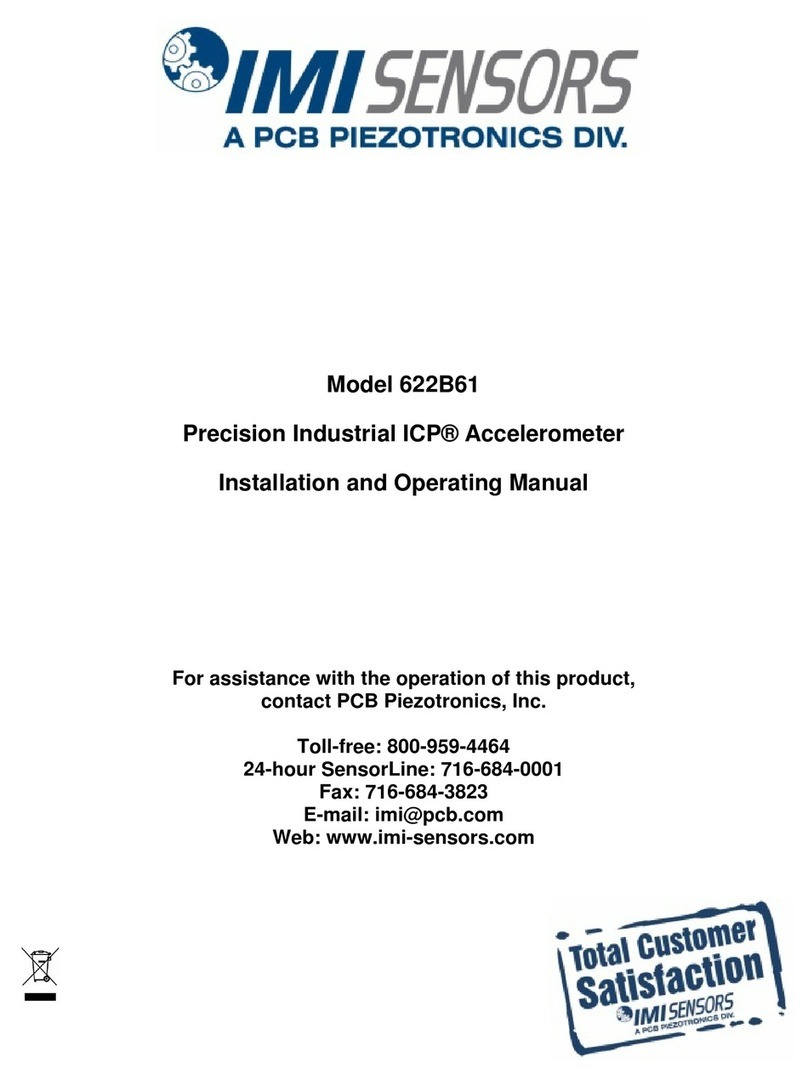
PCB Piezotronics
PCB Piezotronics IMI SENSORS 622B61 Installation and operating manual
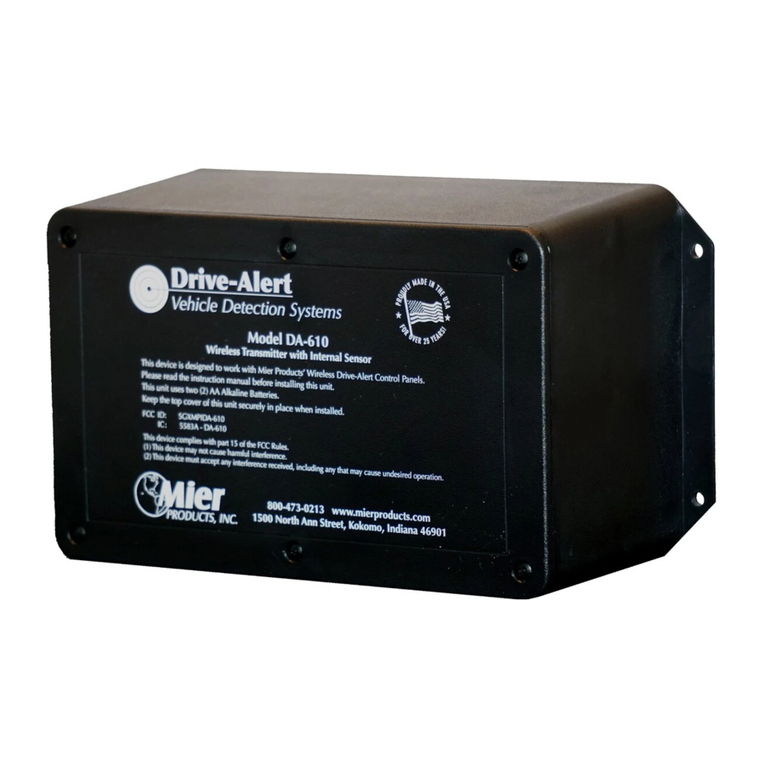
Mier products
Mier products DA-610TO installation guide
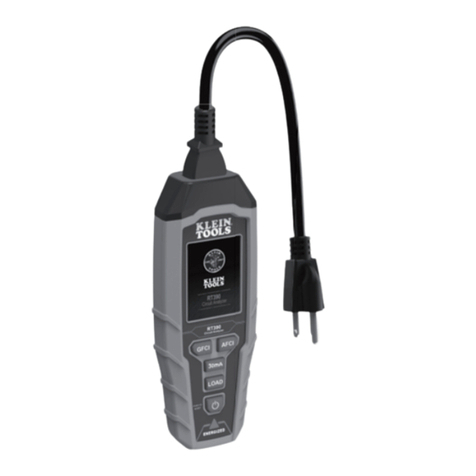
Klein Tools
Klein Tools RT390 instruction manual

Norsonic
Norsonic nor118 instruction manual
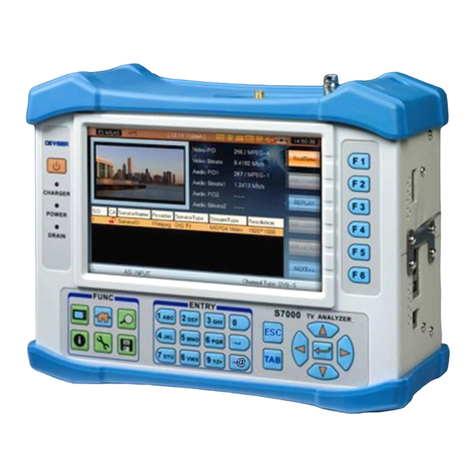
Deviser
Deviser S7000 Series Operation manual

BRUEL & KJAER
BRUEL & KJAER 2239 A manual


